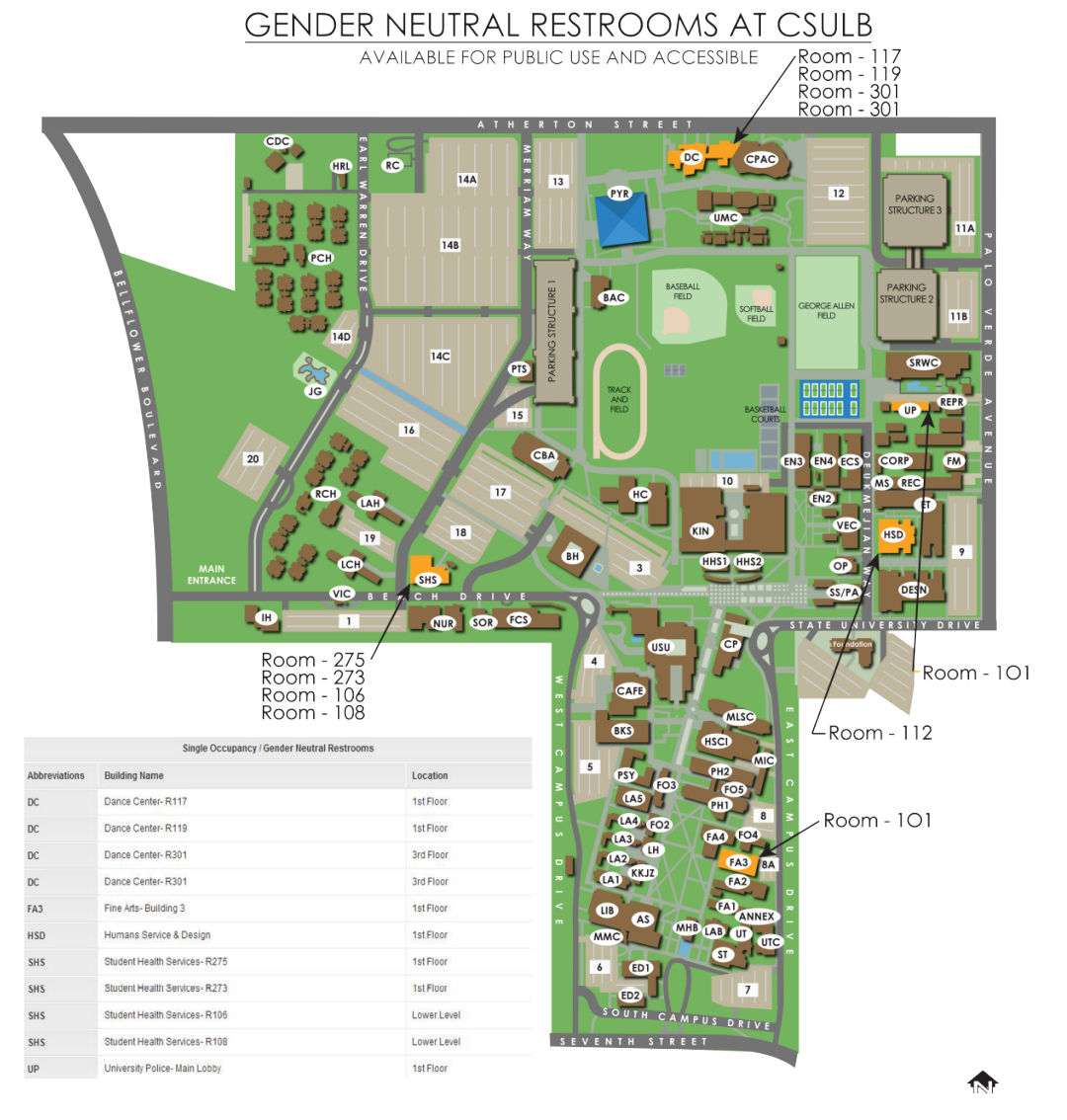
Photos by Gisela Merino.
California State University Long Beach (CSULB) has created 11 gender neutral, ADA-accessible bathrooms across the campus for public use in a move largely directed by student and Secretary of LGBTIQ [regard author’s note below] Affairs Laura Kaiser.
Gender neutral bathrooms have long existed on the campus, however, without public access; in other words, they were either private or employee only.
“Laura was the main proponent of adding these bathrooms across campus,” said Larisa Hamada, director of CSULB’s Equity and Diversity Office. “She saw an opportunity to not only expand access for gender non-conforming students, but also increase comfort levels and discussion for everyone.”
 That access is important for trans and gender non-conforming students in the sense that often, they are castigated or mentally anguished in having to choose between the dichotomous male/female nature of restrooms. Some, particularly if they are open about their identity, might get taunted, verbally abused, or physically confronted by entering into a gender-specific restroom. Gender neutral restrooms, in turn, provide them with privacy and safety, in addition to the comfort of knowing the university explicitly supports their identity.
That access is important for trans and gender non-conforming students in the sense that often, they are castigated or mentally anguished in having to choose between the dichotomous male/female nature of restrooms. Some, particularly if they are open about their identity, might get taunted, verbally abused, or physically confronted by entering into a gender-specific restroom. Gender neutral restrooms, in turn, provide them with privacy and safety, in addition to the comfort of knowing the university explicitly supports their identity.
But even beyond the LGBTIQ factor, gender neutral bathrooms are beneficial to many different people. Parents or caregivers whose children or attendants are of a different gender find these private, individual bathrooms far more comforting for all parties involved. Mothers who are uncomfortable with breastfeeding in public benefit by having a closed space. And even introverts or those who are “pee shy” can readily access a space that eases their anxiety.
Below is a full map, courtesy of CSULB, which locates precisely each of the 11 publicly accessible gender neutral bathrooms:

AUTHOR’S NOTE: LGBTIQ stands for Lesbian, Gay, Bisexual, Transgender, Intersex, and Queer. “Intersex” is a general term used for a variety of conditions in which a person is born with a reproductive or sexual anatomy that doesn’t seem to fit the typical definitions of female or male; this includes those with mosaic genetics (cells have differing chromosomes, both XX and XY), androgen insensitivity syndrome, and other biological situations that alter or make unclear what is commonly referred to as definitive sexual characteristics.
{FG_GEOMAP [33.7820574,-118.12238409999998] FG_GEOMAP}

